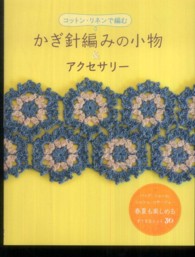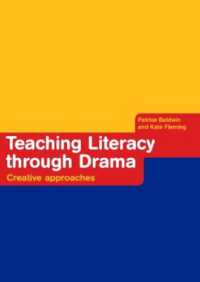- ホーム
- > 洋書
- > 英文書
- > History / World
Full Description
The human head has had important political, ritual and symbolic meanings throughout Andean history. Scholars have spoken of captured and trophy heads, curated crania, symbolic flying heads, head imagery on pots and on stone, head-shaped vessels, and linguistic references to the head. In this synthesizing work, cultural anthropologist Denise Arnold and archaeologist Christine Hastorf examine the cult of heads in the Andes—past and present—to develop a theory of its place in indigenous cultural practice and its relationship to political systems. Using ethnographic and archaeological fieldwork, highland-lowland comparisons, archival documents, oral histories, and ritual texts, the authors draw from Marx, Mauss, Foucault, Assadourian, Viveiros del Castro and other theorists to show how heads shape and symbolize power, violence, fertility, identity, and economy in South American cultures.
Contents
Part I The Ethnography of Andean Head Taking and Power; Chapter 1 Heads in Small-scale Polities; Chapter 2 The Captured Fetish, the Mountain Chest, and Sacrifice; Chapter 3 Drinking the Power of the Dead; Chapter 4 The Nested Power of Modern Andean Hierarchies; Part II The Archaeology of Andean Head Taking and Power; Chapter 5 Heads and the Consolidation of Andean Political Power; Chapter 6 Heads and Andean Political Change from an Archaeological Perspective; Chapter 7 Central Andean Political Developments; Chapter 8 Conclusions;







